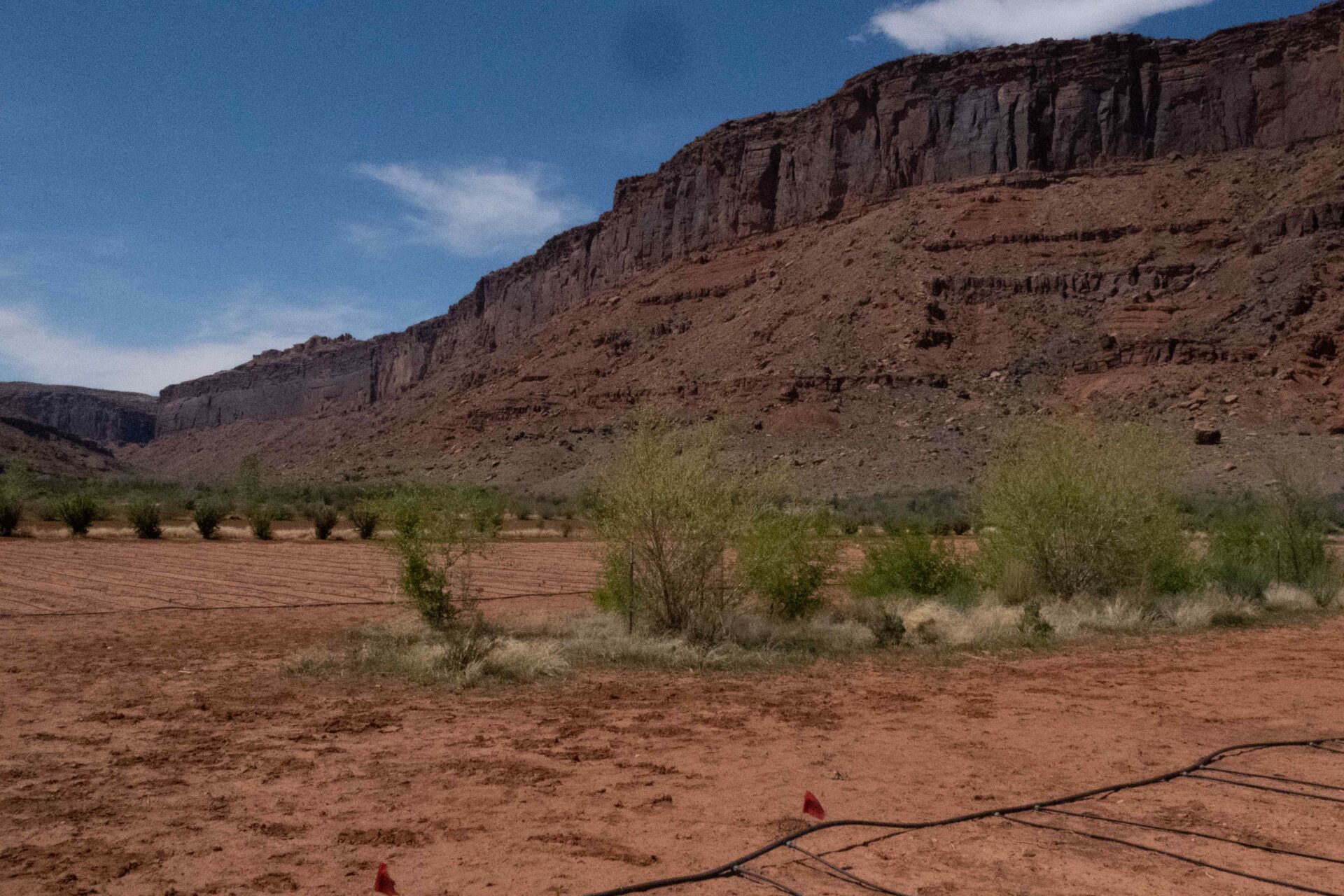Some information may be outdated.
Mayberry staff work toward their goal to create a healthy plant community on the Upper Colorado Plateau.
The Mayberry Native Plant Propagation Center, operated by local nonprofit Rim to Rim Restoration, is helping revegetate local areas where human activity or invasive plant and animal species have damaged the natural landscape.
The center is located on a 30-acre property fifteen miles northeast of Moab along the banks of the Colorado. The land, which used to be a peach orchard, is now being used to grow native plant species for revegetation efforts on the Upper Colorado Plateau.
“Gateway communities like Moab really highlight some of the challenges of bringing lots of people together in natural environments,” said Kara Dohrenwend, director of Rim to Rim Restoration. “[Our work] fits into that overall interest of ‘How do we better live with the landscape as opposed to on the landscape?’”

Propagating desert plants comes with its own set of challenges.
“Desert plants are amazingly resilient, but they also can be really challenging to get them to germinate and to get them to grow,” Dohrenwend said. But a passion for creating a healthier plant community helps Dohrenwend and her staff continue in their work.
After taking a hiatus from events during the COVID-19 pandemic, the Mayberry property is once again hosting two events each year, one in celebration of Earth Day and another in October to commemorate the year’s projects. This year, Mayberry hosted a public open house on Saturday followed by a volunteer planting and maintenance event on Earth Day in partnership with The Synergy Company and Western Rivers.
“I think more people need to come to our events and find out what we’re doing out here,” said Ray Williams, Mayberry property manager.
A quick walk around the property shows you the variety of projects the staff is currently working on and the results of past projects.
Dohrenwend and Williams, who together founded Rim to Rim Restoration, first acquired the Mayberry property in 2009. At that time, it was a failed orchard with only eight trees and plenty of pesky knapweed. Fifteen years later, the property is nearly weed-free and includes a barn, solar panels, functioning fields and areas for research.
The Mayberry project was inspired by the Upper Colorado Plateau’s lack of representation in national native plant propagation efforts. The Natural Resources Conservation Service operates Native Plant Materials Centers across the nation, but Dohrenwend and Williams recognized that there was no center to cater to the unique needs of the Upper Colorado Plateau.
They created Mayberry to fill this critical gap in growing regionally sourced plants that can be used for revegetation efforts.
Turning the property from a weed-infested and dried-up orchard into suitable area for seed harvesting was a process that took years of carefully cultivating the land. Now, Dohrenwend and Williams oversee several small-scale seed increase fields. The concept is to plant a small number of seeds and then harvest an increase from the grown plants. The National Park Service even funds some of these fields and uses the seeds for revegetation purposes in the parks.
Along with plant propagation, Dohrenwend explained, the Mayberry property has also been used for research.
“At one point, the United States Geological Survey used it as a biocrust farm to test some techniques for producing biocrust more quickly to use in revegetation,” she said. This project was in partnership with the USGS, The Nature Conservancy and others. It was the first effort to grow biocrust on an agronomic scale in the Western United States.
“Now that that experiment is over,” said Dohrenwend, “we have what’s called a common garden, which is trialing different varieties of selections of native grasses that are commonly used in restoration to see how they react differently when planted in the same area.”
What’s next for Mayberry? According to the organization, they will continue seed trials and continue growing regionally sourced seed from the NPS and other organizations who are working to improve the ecosystem in the Upper Colorado Plateau. They also plan to build a passive solar greenhouse and to provide power to the barn for the propagation of cuttings and seed that will serve to improve and regenerate the plant community throughout the area.
Appreciate the coverage? Help keep local news alive.
Chip in to support the Moab Sun News.





